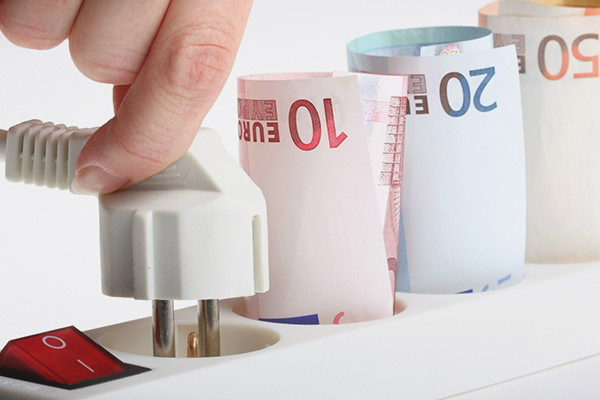The content of the article
The issue of saving electricity is extremely relevant today. Utilities are rapidly becoming more expensive, so many families are clutching their heads when regular bills arrive. It would seem that the computer does not work in vain, households turn off the light when they leave the room, household appliances are rarely used. But payments only increase each time, what to do? It is necessary to study all aspects, then follow the recommendations clearly. Consider the main features.
Features of energy saving in the apartment
- Household appliances work not only in normal, but also in "sleep" mode. These include water heaters, microwaves, equipment (video and audio), chargers, all kinds of gadgets, split systems, computers, etc.
- When devices do not work, they are in standby mode. This, in turn, still consumes electricity.To prevent costs from rising, turn off appliances from the outlet if you are not using them.
- Comprehensive gadgets that are in sleep mode consume 10% of the electricity from total utilities. If you add up all the values, you overpay for a simple one (about 3-4 thousand rubles a year).
Use household appliances correctly.
Iron
- In the case of iron everything is simple. Start ironing things almost immediately after turning on the device, let it gradually warm up to the desired mark and perform its function.
- Turn off the iron for 10 minutes before the end of the manipulation. The sole of the device will remain hot for the entire period, you will complete ironing on the principle of residual heat.
- Try to dry the laundry by 95%, leave the remaining 5% to the iron. If things are too dry, the device will need more power to process and knead all the creases. You, accordingly, spend a lot of electricity.
- Discard Soviet household appliances, give preference to modern irons with automatic shutdown function.When heated to a certain temperature, the indicator turns off, so energy is saved.
- Choose an ironing mode according to the type of fabric. If you are using flax or cotton, do not manipulate at too low a temperature. You will spend more time and electricity, and the creases will not be removed completely.
A vacuum cleaner
- In order for the vacuum cleaner to consume electricity in accordance with the stated indicators, it is necessary to regularly shake out the dust and clean the existing filters.
- If you ignore this advice, household appliances will exceed the permissible rates by 20-30%. The vacuum cleaner will work with less efficiency, but more energy.
- Household appliances of this kind use the most light when turned off and on. Therefore, try not to turn off the vacuum cleaner after processing each room. Pull it behind you in running condition.
Washer
- This household appliance accounts for 15% of the cost of electricity. Study the manufacturer's recommendations, use all the functions of your washing machine.
- Choose not hour and a half modes, but programs of economical and fast washing. Fill the drum tightly, but avoid overloading.In the latter case, the household appliance spends 10% more electricity.
- Not all things need to be washed at 50-60 degrees. Expose the program with a lower temperature regime and degree of spin. Properly select washing technology (very dirty things, easy cleaning, etc.).
Split system (air conditioning)
- Cooling systems “eat up” a lot of electrical energy, so you need to use them less often. If possible, set the maximum power 3 times a day and cool the room in this way.
- Families with small children should not be set too low in temperature, so try to cool the apartment around the room. Before turning on the air conditioner, make sure that the vents, windows and doors are tightly closed. Eliminate possible gaps that allow warm air from the street.
- Before you buy a split system, measure the room in which the air conditioner will be installed. It is also important to consider the number of people in the room. Do not take equipment with high or low power. Prefer the options in the middle.
- Do not forget about the routine maintenance of the air conditioner.Clean the filters, cartridges and fans according to the schedule. Regularly fill the special compartment with liquid as it evaporates.
Computer
- To date, personal computers are available in almost every home. This is not surprising, since the century of technological progress leaves its mark on society.
- A PC consumes a lot of electrical energy, which significantly increases the average bill for utilities. Monitor brightness consumes a lot of light. If there is no need for a strong indicator, reduce it to an acceptable mark.
- If you do not use the computer for 1-2 hours, do not wait until the equipment turns off automatically. Put your PC to sleep or turn it off altogether.
- If by the nature of the service you need to use a scanner, modem or printer, connect peripheral devices through a network filter. Always turn off devices if they are not needed.
- New LCD displays spend less electricity than their predecessors. If possible, go to such monitors or use laptops (they consume light 30% lower).
Fridge
- Even a child has the basic skills of using a refrigerator. There is nothing difficult in this, but adults make many mistakes during the installation of a household appliance.
- For example, it is strictly not recommended to put a refrigerator on the sunny side of the kitchen, near heating appliances and radiators, near a gas or electric stove.
- If there are sources of heat nearby, the refrigerator will begin to bask in them. The camera, in turn, will try to keep the mark at the proper level. This will lead to greater costs of light.
- It is also important to stick to the temperature mark in the kitchen. The optimum mode is considered to be 19-21 degrees. This temperature will allow the refrigerator to function without any extra effort.
- Do not neglect the basic rules for the care of equipment. Defrost, free the camera from strong pieces of ice. Replace the rubber seals on the doors so that the refrigerator always remains tight.
- Never push the equipment close to the wall, such a move will slow the air circulation, the refrigerator will warm up. Do not buy a huge device if the needs of your family are not so high.He spends a lot of light and in vain cools empty space.
Heating appliances
- The most powerful "eaters" of electricity are heaters. To reduce the amount of energy consumed, it is necessary to warm all windows, doors, floors, walls, etc.
- Of course, double-glazed windows perfectly insulate heat. But wooden frames let it through a large part (about 50%). Seal all gaps with masking or regular scotch, warm the windows with cotton wool. Similarly, it is necessary to seal the doors tightly.
- If central heating is on, but the room is still cold, flush the pipes. You can also change the batteries with new ones or “increase” several additional sections. With this outcome, heaters will not be required.
- In the case when the heaters literally "eat up" your family budget, learn to use other sources of heat. In their role can be a towel dryer (it is connected to hot water) or a gas burner. In the latter case, you need to constantly monitor the amount of gas emitted and periodically ventilate the room.
Energy Saving Tips
- Wipe the chandeliers. Keep incandescent bulbs and shades clean. If dust constantly accumulates on them, the illumination of the room will drop dramatically. You will begin to turn on more and more light, raising costs. Pure chandeliers diffuse light much more efficiently, so you can use incandescent lamps of lesser power.
- Wash the windows. Wet clean windows as often as possible. Clean windows allow sunlight to enter the apartment, so you will need natural light. From here there will be no need to use electricity in large quantities. In addition, the sun will warm the room in the cold season.
- Combine lighting. Do not use only the "upper" light, if you need to work at a table in the far corner of the room. Combine chandeliers with floor lamps or table lamps. If the overhead light suggests incandescent 3-5 bulbs, unscrew the excess, leave 2 pcs.
- Use modern appliances. Today, there are many devices that serve to save electricity. These include motion sensors (the light turns on and off automatically), infrared porters,light controllers with a smooth change of illumination, digital switches, pulse relay.
- Change light bulbs. Conventional incandescent bulbs consume 5-8 times more electricity than their luminescent, compact, and LED relatives. Replace all bulbs in your home with energy efficient ones. Such a move will be true, since you can save on accounts about 40% per year.
- Turn off the "extra" light. Take the habit of turning off the lamp when leaving the room. Agree with households that from now on you have entered a saving mode. This does not mean that you need to sit in the dark for hours. There is simply no need to light a room in which there is no one. This is especially true of children, the younger generation due to age does not worry about the family budget.
- Boil water properly. If it is necessary to warm the liquid on the stove, pour in hot water. Cover dishes and stew to the desired mark. In this case, the bottom of the dish should be tightly in contact with the hob. As for the kettle, do not fill the entire cavity with water. Boil as much liquid as needed to brew 2-3 cups of tea. Pour the rest of the hot water into a thermos, then drink it.
Watch how you use household appliances. Pull out the charging from the phone from the outlet, do the same with a non-working microwave, a slow cooker, a coffee maker. Do not install the refrigerator near the radiators, boil water in the kettle in small portions.
Video: how to save electricity












To send